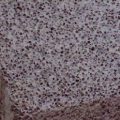average investment > Concrete Temperature Sensors: Revolutionizing Businesses in Construction and Engineering
Concrete Temperature Sensors: Revolutionizing Businesses in Construction and Engineering
Concrete temperature sensors are groundbreaking devices that continuously monitor and record the temperature of concrete throughout its curing and hardening phases.
For businesses immersed in concrete work, whether in construction, civil engineering, or testing, the integration of concrete temperature sensors can yield substantial benefits.
This comprehensive guide outlines the essence of concrete temperature sensors and the transformative influence they wield over your business.
Understanding Concrete Temperature Sensors
Concrete temperature sensors house thermocouples or resistance temperature detectors (RTDs), encapsulated within a robust, concrete-resistant casing. These sensors can be strategically positioned at varying depths and locations within a concrete mass. Presently, most concrete sensors are wired, facilitating the remote monitoring of temperature data through data loggers or handheld readers. Wireless concrete sensors have also entered the market, offering enhanced convenience.
Each concrete temperature sensor diligently observes and archives the temperature fluctuations within the concrete, tracking the journey from the initial mix to the critical phases of curing and hardening. Temperature plays a pivotal role in concrete hydration and the development of its structural integrity. Vigilant temperature monitoring empowers workers to ensure that the concrete cures effectively, aligning with anticipated strength parameters.
Benefits for Construction and Engineering Enterprises
For construction firms and contractors specializing in concrete applications, the integration of concrete temperature sensors translates into the assurance of structural soundness and the fulfillment of strength prerequisites. The data derived from these sensors verifies the correct progression of curing and hardening, guaranteeing that the final concrete product exhibits the anticipated load-bearing capacity and durability. This diligent monitoring practice mitigates the emergence of flaws that could lead to fissures or premature structural failure.
Moreover, the temperature profiles serve as irrefutable documentation that the project adheres to industry standards and stipulated specifications, preempting potential complications in the later stages. This documentation upholds the reputation of the business as a reliable provider of quality work. Monitoring temperature also guards against the occurrence of excessive heat of hydration, which, if left unmonitored, could trigger detrimental thermal cracking. By doing so, this monitoring process precludes the creation of unsafe structures or the need for costly repairs at a later stage.
Furthermore, the temperature data plays a crucial role in identifying the ideal moment for the removal of forms or supports without compromising the concrete’s robustness or endangering the structure. Concrete that is appropriately cured and durable, thanks to temperature monitoring, results in a significant reduction in costs associated with rework, repairs, or replacements that might otherwise accrue over the lifetime of a structure.
Lastly, the adoption of advanced monitoring technology represents a commitment to best practices and the delivery of superior work. This utilization of sophisticated monitoring tools attracts potential clients and confers a competitive edge.
Applications for Testing Firms
For testing laboratories and facilities, concrete temperature sensors bestow an array of indispensable capabilities. These sensors enable the gathering of precise field data, under real-world conditions, regarding curing and hydration rates, making them invaluable for research and development studies. They further support the analysis of different concrete mix designs, ingredients, and admixtures to optimize concrete mixes.
Temperature monitoring also serves as a validation mechanism when developing proprietary concrete products to ensure consistent performance and quality. The data collected from job sites serves as independent verification that temperatures align with curing requisites, comply with industry codes, and meet project requirements, thereby ensuring accountability. Additionally, temperature data can identify anomalies, serving as early indicators of problems, allowing for root cause analysis and assisting in the prevention of future failures.
With their multifaceted benefits, concrete temperature sensors represent a cost-effective investment that substantially enhances business operations, quality control, safety measures, and client satisfaction, making them indispensable tools for both construction and testing applications. The temperature data they yield is invaluable in ensuring proper concrete curing, offering priceless insights into concrete properties and performance.




